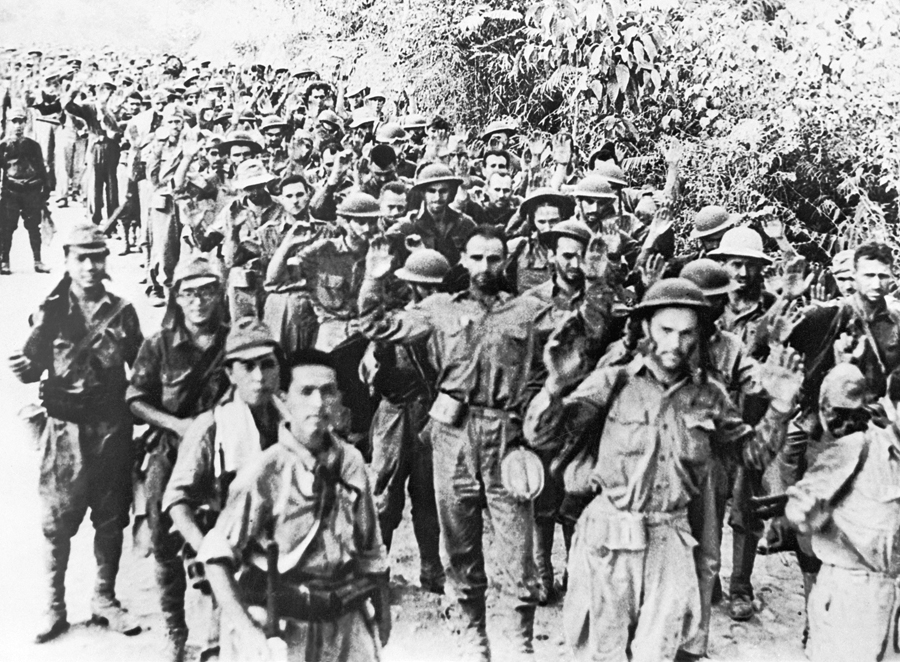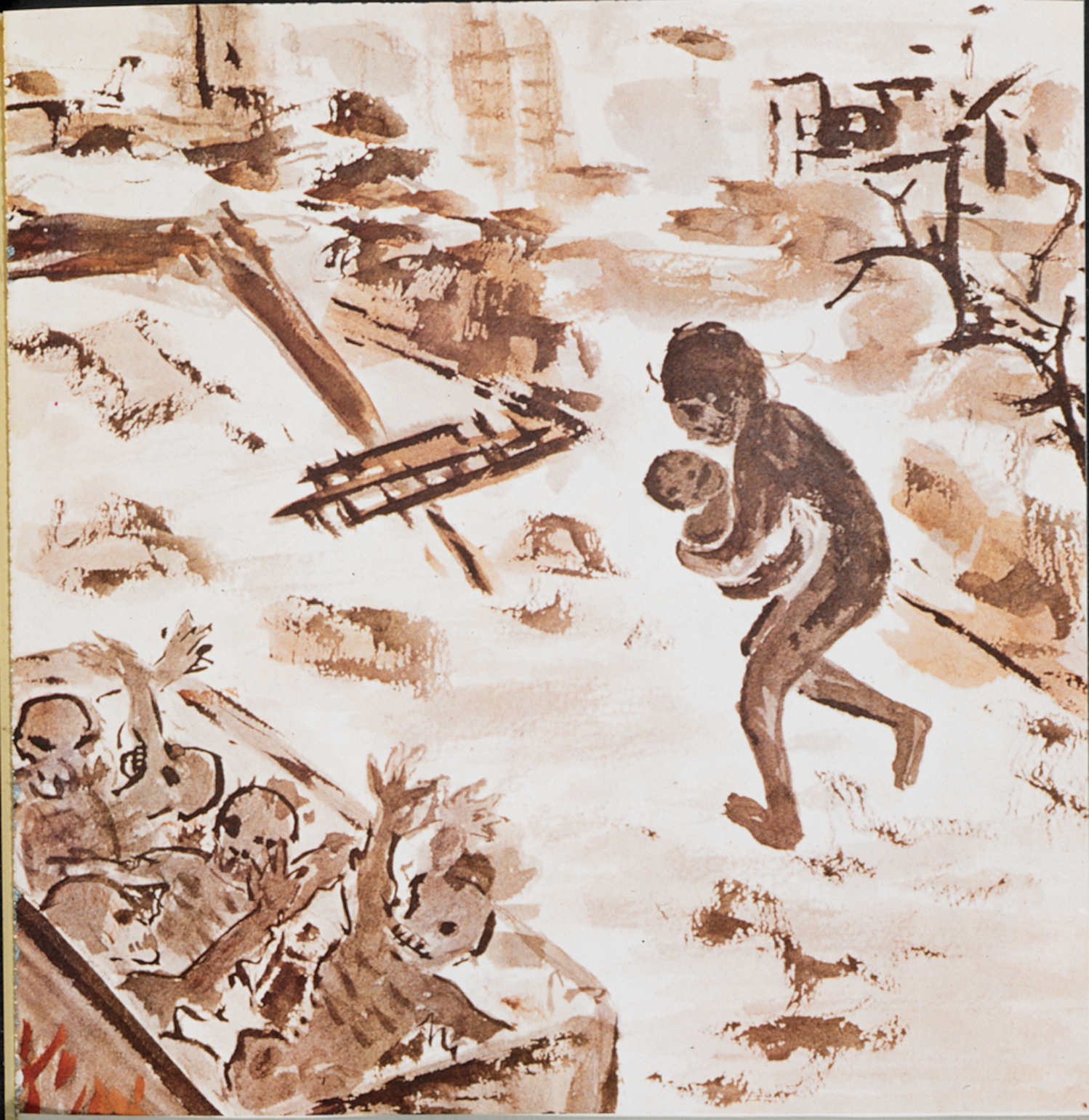A History of World Societies:
Printed Page 948
A History of World Societies Value
Edition: Printed Page 959
The War in the Pacific, 1942–1945
While gigantic armies clashed on land in Europe, the greatest naval battles in history decided the fate of the war in Asia. In April 1942 the Japanese devised a plan to take Port Moresby in New Guinea and also destroy U.S. aircraft carriers in an attack on Midway Island (see Map 30.3). Having broken the secret Japanese code, the Americans skillfully won a series of decisive naval victories. First, in the Battle of the Coral Sea in May 1942, an American carrier force halted the Japanese advance on Port Moresby and relieved Australia from the threat of invasion. Then, in the Battle of Midway in June 1942, American pilots sank all four of the attacking Japanese aircraft carriers and established overall naval equality with Japan in the Pacific.
Badly hampered in the ground war by the Europe first policy, the United States gradually won control of the sea and air as it geared up its war industry. By 1943 the United States was producing one hundred thousand aircraft a year, almost twice as many as Japan produced in the entire war. In July 1943 the Americans and their Australian allies opened an “island-
The Pacific war was brutal — a “war without mercy” — and atrocities were committed on both sides.31 Aware of Japanese atrocities in China and the Philippines, the U.S. Marines and Army troops seldom took Japanese prisoners after the Battle of Guadalcanal in August 1942, killing even those rare Japanese soldiers who offered to surrender. American forces moving across the central and western Pacific in 1943 and 1944 faced unyielding resistance, and this resistance hardened soldiers as American casualties kept rising. A product of spiraling violence, mutual hatred, and dehumanizing racial stereotypes, the war without mercy intensified as it moved toward Japan.

In June 1944 U.S. bombers began a relentless bombing campaign of the Japanese home islands. In October 1944 American forces under General Douglas MacArthur landed on Leyte Island in the Philippines. The Japanese believed they could destroy MacArthur’s troops and transport ships before the main American fleet arrived. The result was the four-
In spite of massive defeats, Japanese troops continued to fight with courage and determination. Indeed, the bloodiest battles of the Pacific war took place on Iwo Jima in February 1945 and on Okinawa in June 1945. American commanders believed that an invasion of Japan might cost 1 million American casualties and possibly 10 to 20 million Japanese lives. In fact, Japan was almost helpless, its industry and cities largely destroyed by intense American bombing. As the war in Europe ended in April 1945, Japanese leaders were divided. Hardliners argued that surrender was unthinkable; Japan had never been invaded or lost a war. A peace faction sought a negotiated end to the war, seeking help from the Soviet Union to mediate a diplomatic settlement between Japan and the United States and Great Britain. In archives made available after the Soviet Union’s collapse, it is clear that Stalin led the Japanese on by giving them false hope of a diplomatic solution. In truth, Stalin was stalling for time to move his military forces from Europe to Asia, making plans to seize Japanese occupied territories in China and Korea.
On July 26 Truman, Churchill, and Stalin issued the Potsdam Declaration, which demanded unconditional surrender. The declaration left unclear whether the Japanese emperor would be treated as a war criminal. The Japanese, who considered Emperor Hirohito a god, sought clarification and amnesty for him. The Allies remained adamant that the surrender be unconditional. The Japanese felt compelled to fight on.

On August 6 and 9, 1945, the United States dropped atomic bombs on Hiroshima and Nagasaki in Japan. Mass bombing of cities and civilians, one of the terrible new practices of World War II, had led to the final nightmare — unprecedented human destruction in a single blinding flash. Also on August 9, Soviet troops launched an invasion of the Japanese puppet state of Manchukuo (Manchuria, China). Japan’s leaders knew they could not stop a Soviet invasion of the Japanese islands from the west, as they had only prepared for an Allied invasion from the south. To avoid a Soviet invasion and further atomic bombing, the Japanese announced their surrender on August 14, 1945. The Second World War, which had claimed the lives of more than 50 million soldiers and civilians, was over.